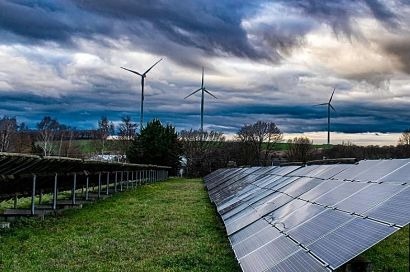
The recent COP28 commitment signed by world leaders to triple renewable energy capacity by the end of the decade was welcomed by many stakeholders, but it also raises questions about the potential impacts of such a rapid scale-up.
REN21’s Renewable Energy and Sustainability Report (RESR) is timely. Building on a year-long research and consultative process across a wide range of stakeholders, both inside and outside the renewable energy sector, the report demonstrates that renewables are the most sustainable energy source. The report maps and analyses the potential negative impacts that can emerge from scaling up renewables – including on critical issues such as land and water use, biodiversity, forests, human rights, critical materials and waste generation. The RESR concludes that the benefits of renewables largely outweigh their potential negative impacts and that any such negative impacts can be mitigated with the adoption of existing best practices.
For the first time in the renewable energy sector, REN21’s RESR brings together crowd-sourced data and evidence from diverse stakeholders and perspectives such as environmentalists, industry leaders, human rights organisations and others. The RESR’s findings represent a solid shared understanding of how to maximise the benefits of renewables and reduce and/or eliminate their potential negative impacts. The key sustainability principles outlined in the report include, among others, the careful siting of renewable energy infrastructure and the preservation of natural resources, the development of circularity in renewables supply chains, and the involvement of all stakeholders, especially affected communities.
REN21’s RESR also provides numerous examples of good practices, effective regulations, and industry standards and certifications, as well as inspiring initiatives that can be applied or adapted to ensure the sustainable deployment of renewables.
A groundbreaking report in its approach and methodology, REN21’s RESR is the starting point of a dynamic process. It is built around knowledge aggregation and multi-stakeholder dialogues to track the continuous innovation and technological advancements in the renewable energy sector, including evolving policies, regulations and standards.
“The evidence is clear: renewables are the most sustainable energy source for tackling climate change, pollution and biodiversity loss while ensuring industrial and economic development, job creation, energy security and better human health” said Rana Adib, Executive Director, REN21. “The RESR gives decision makers a recipe for an immediate, sustainable and equitable energy transition, leaving little room for scepticism and excuses.”
How do renewables compare to fossil fuels?
It is well known that fossil fuels, responsible for 75 percent of human-induced greenhouse gas emissions, are the main driver of climate change. The pollution generated by their extraction, production and burning is also responsible for millions of premature deaths and is an important driver of biodiversity loss.
In comparison, the average median emissions of all renewable energy technologies, from a life-cycle perspective, are proven to be much lower than those of fossil gas and coal, respectively. While fossil fuel operations and their extraction sites leave land polluted, degraded and depleted long after the facilities are decommissioned, renewables do not have the same long-term impacts on land and water. In addition, most renewable energy installations can co-exist with other uses like agriculture or fishing. Renewables can also be deployed on degraded or former industrial, contaminated and marginal land and can leverage existing infrastructure such as rooftops, railways, highways and parking lots to reduce their impact on land.
Materials extracted for renewables are used to build facilities and infrastructure, and most of them are highly recyclable, unlike fossil fuels that are continuously extracted to be burned. In 2021, fossil fuel extraction amounted to more than 8 billion tonnes of coal, 4 billion tonnes of oil and the equivalent of 2.6 billion tonnes of fossil gas; by comparison, materials extracted for renewables included only 21 million tonnes of copper, 2.6 million tonnes of nickel, 0.17 million tonnes of cobalt and 0.11 million tonnes of lithium.
In most of the energy transition scenarios, expanding solar photovoltaics (PV) and wind energy represent a minor share of the projected increase in material demand. The bulk of the rise in material demand is represented by electricity networks as well as battery storage, especially for electric vehicles, which are essential for a systemic energy transition. Scaling up energy efficiency, and implementing sustainable mobility practices such as walking, cycling, and public transport, can further minimise the use of non-renewable materials (such as critical minerals). Technology advancements, design choices and implementation of circularity principles will also minimise critical material uses.
For additional information:

